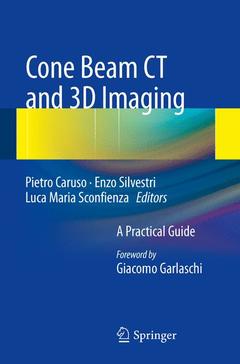Description
Cone Beam CT and 3D imaging, 2014
A Practical Guide
Language: English
Subjects for Cone Beam CT and 3D imaging:
153 p. · 15.5x23.5 cm · Paperback
Description
/li>Contents
/li>Comment
/li>
Cone beam computed tomography (CBCT) has become the standard of reference in dental imaging. The distribution of CBCT devices is increasingly wide, and the number of required examinations is constantly growing. In this setting, it is now essential that medical and technical staff receive specific training in the use of CBCT and that technical guidelines for CBCT examinations are established. This clearly structured book on CBCT will be an ideal aid in daily clinical practice. It clearly explains basic CBCT anatomy, examination technique, and the use of 3D reformatting software. A wide range of cases are presented, covering the most frequent and relevant conditions and pathologies, including dental anomalies, inflammatory and degenerative disease, tumors, and implants.
These books may interest you

Cone Beam Computed Tomography 179.76 €



